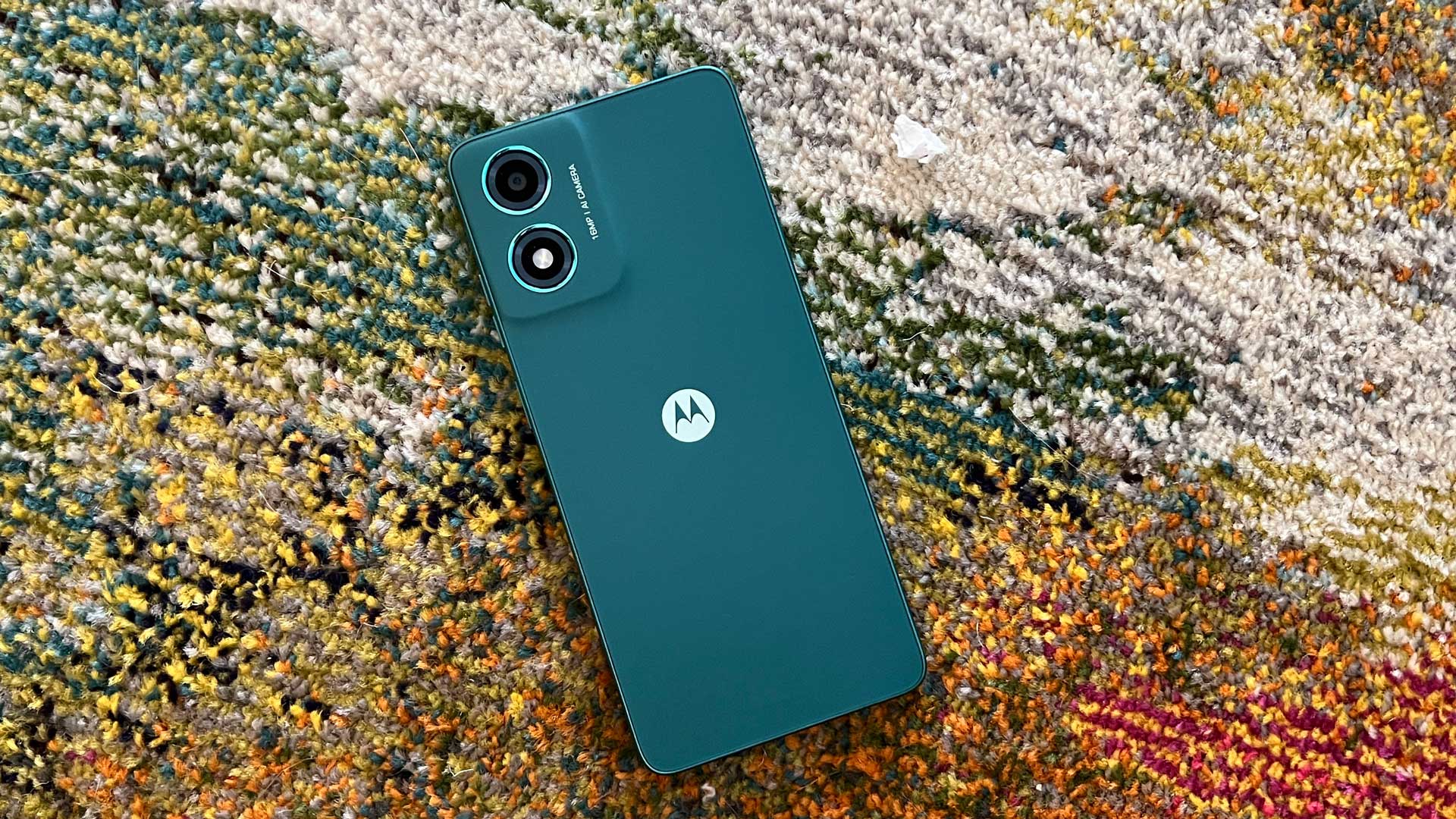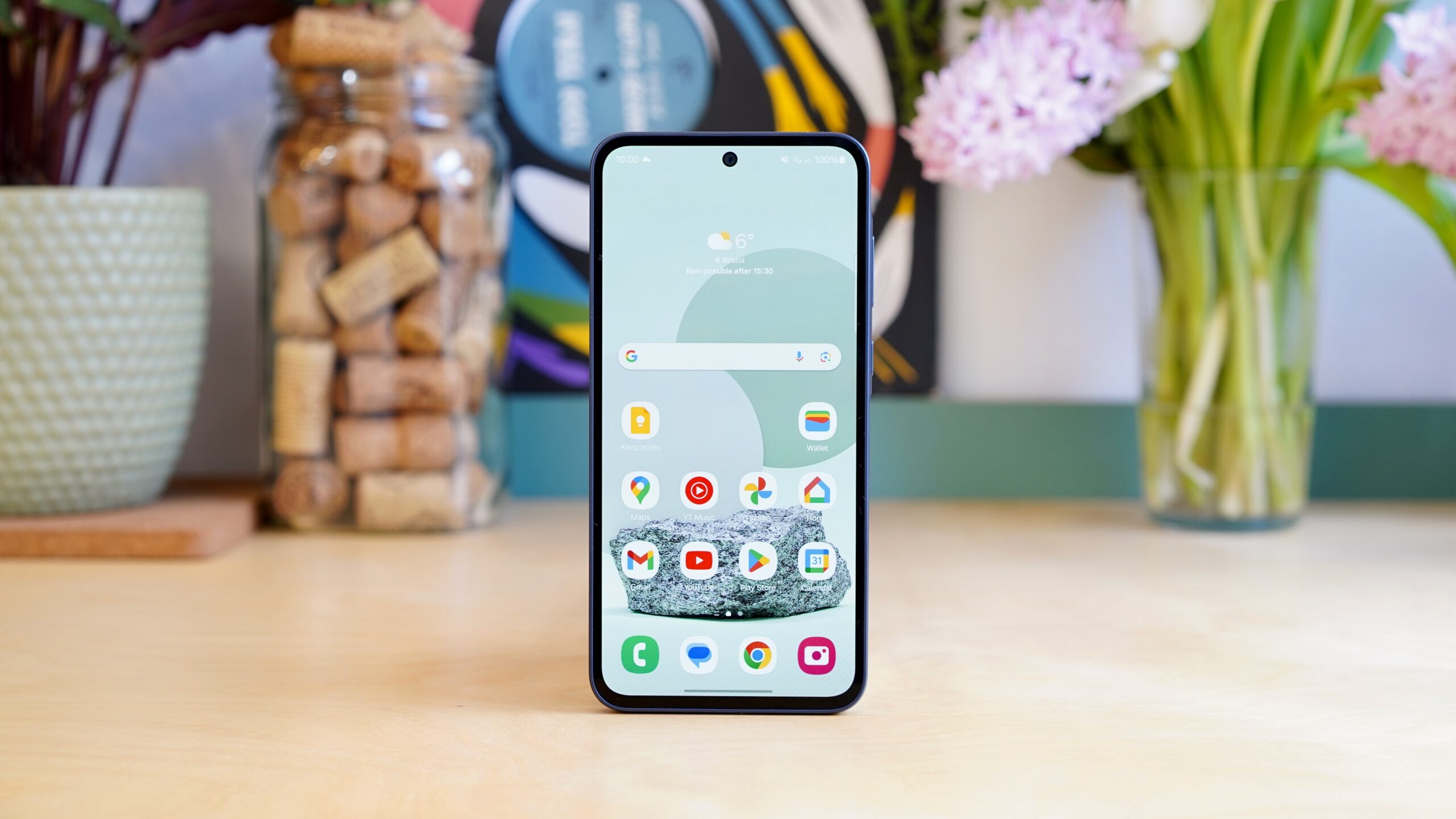Oppo A16s Review
A budget phone with no thrills and precious little charm
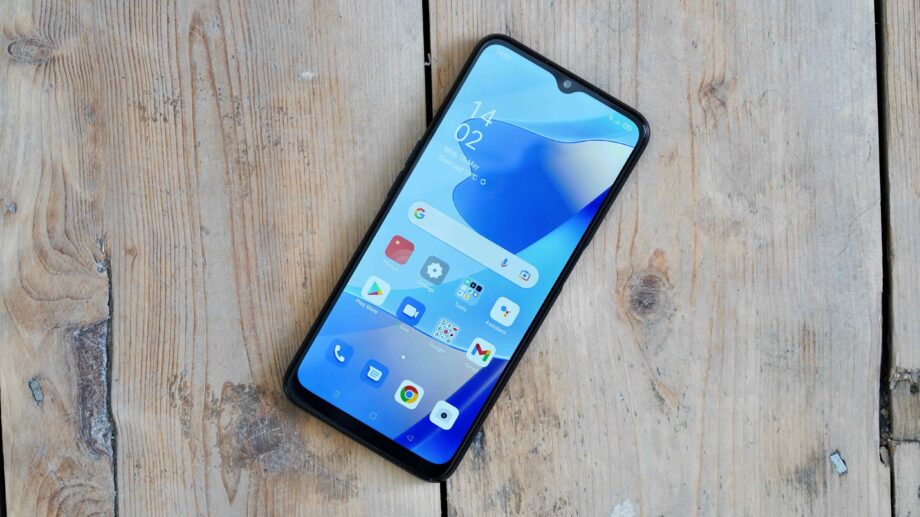
Verdict
The Oppo A16s is a budget phone with no thrills and precious little charm. For better and for worse, it’s a very cheap and generally inoffensive handset, achieving a base level of competence. But paying a smidgen more for your next phone seems advisable if at all possible.
Pros
- Strong battery life
- Very cheap
- Decent fingerprint sensor
Cons
- Poor performance
- Slow 720p LCD
- Plasticky, greasy design
Availability
- UKRRP: £159
- USAunavailable
- Europeunavailable
- Canadaunavailable
- Australiaunavailable
Key Features
- DisplayThere’s a 720p display here, but it lacks a fast refresh rate
- Big batteryThe 5000mAh battery is large, and makes for strong endurance
Introduction
The Oppo A16s is an extremely affordable phone that undercuts even the Poco and Redmi brigade currently besieging the £200 sector.
It offers low-end specifications and a no-nonsense design for an RRP of just £159. At the time of writing, several months on from its UK rollout, Oppo has dropped that price further to just £139.
As a result, the Oppo A16s is currently a direct rival to the likes of the Moto G22 and the Nokia G21. It’s possible to find cheaper phones than these, but the severity of the cuts needed to hit that price point mean that you probably wouldn’t want to.
So, has Oppo managed to get the balance right between affordability and usability?
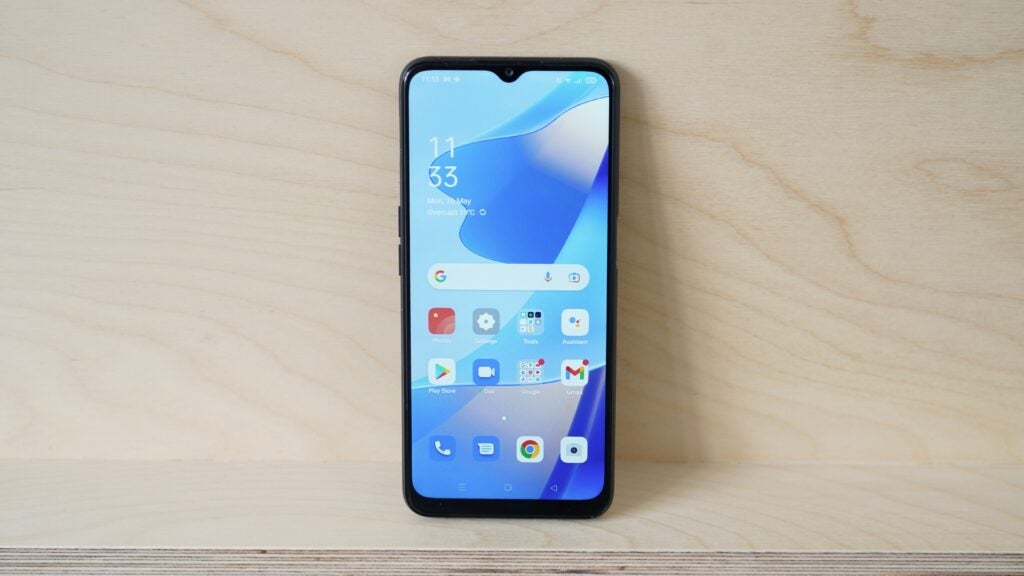
Design and Screen
- Plastic, greasy build
- Reliable fingerprint sensor
- 60Hz and 720p
The Oppo A16s is just about as generic a smartphone design as you’re likely to find. At 163.8 x 75.6 x 8.4mm, its dimensions are far from compact, but it sits easily in the hand.
It’s somewhat heavy at 190g, especially given that the body is made of cheap plastic. But that’s par for the course with budget phones that come packing large 5000mAh batteries, and it’s only 5g heavier than the Moto G22.
The shiny plastic rear of the phone is a fingerprint magnet in the extreme, especially in the Crystal Black of my model. Perhaps the lighter Pearl Blue tone provides more respite from the greasiness.
Not surprisingly, there’s no IP rating included with the A16s, so you’ll want to keep it well away from water and dusty environments.
You do get a speedy and reliable fingerprint sensor stashed behind the flat power button on the right-hand edge. It’s easy to find, too, courtesy of a tactile recess, as well as the fact that the volume buttons are on the opposite edge.
On the bottom edge of the phone you’ll find a 3.5mm headphone jack, as well as the phone’s single speaker. The latter gets nice and loud, although it isn’t of sufficient quality for anything other than brief video snippets and general phone functions.
The front of the phone similarly confirms that you’re dealing with a budget device. The bezels are chunky, especially the phone’s elongated chin. Meanwhile, the display notch is of the old-school teardrop design, meaning it encroaches from the top bezel.
As for that display, it’s a 6.52-inch IPS LCD, which means that it lacks the vibrancy of the OLED panel technology that starts appearing around the £200 mark. It isn’t an especially good LCD either, with a generally washed-out palette that makes video content look a little flat.
With a resolution of 720 x 1600 (HD+), the Oppo A16s display falls short on sharpness, too. This manifests in everything from homescreen icons to Netflix streams, and especially with web content. There’s a general fuzziness to everything that you do on the Oppo A16s.
We said much the same thing about the Moto G22 recently, of course, but that phone at least has a 90Hz refresh rate compared to the A16s’s standard 60Hz. Within the context of such limited components and performance, however, Oppo’s choice was probably the right one.
A peak brightness of 480 nits is perfectly acceptable, but straying outside in sunny conditions will leave you squinting.
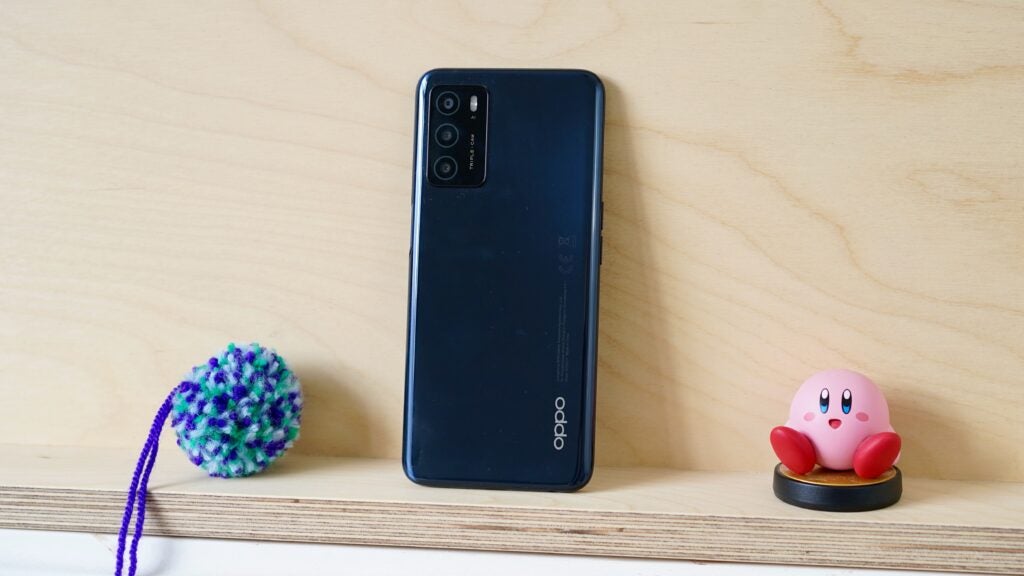
Camera
- 13-megapixel main shooter
- 2-megapixel depth sensor
- 2-megapixel macro sensor
The Oppo A16s features a so-called triple camera system, which actually equates to a single 13-megapixel wide camera and two 2-megapixel assistants. The latter two handle depth and macro duties, which means there’s no ultra-wide or telephoto provision.
The main sensor can capture pretty reasonable shots in optimal lighting, although such shots lack the depth and balance of even the better £200 handsets. Detail is acceptable, and colours are reasonably natural, but the phone struggles to balance out the extremes in high dynamic range (HDR) scenarios.
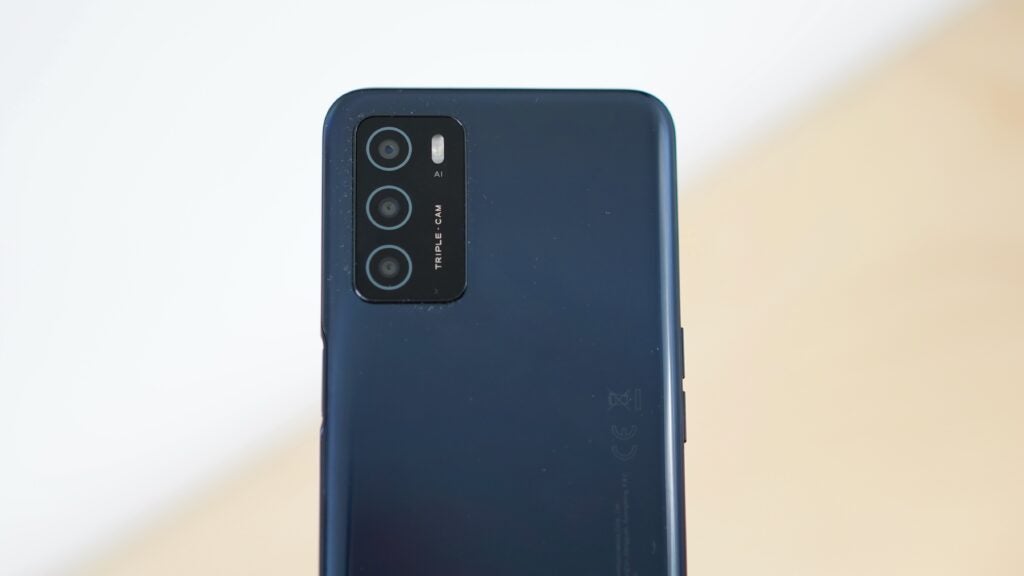

Where the camera system really struggles, however, is as soon as the light drops. At this point, the noise really begins to creep in. This isn’t a unique weakness among cheap phones, of course. Literally, every sub-£300 phone on the market has the exact same flaw, to one degree or another.
One recent example that springs to mind is the Moto G22, although that of course comes with a (fairly mediocre) ultra-wide sensor to help mitigate the limited shooting potential. There’s no such flexibility here.
Meanwhile, since Oppo hasn’t thrown a surfeit of pixels at its one useful sensor, even 2x digital zoom crops don’t look very good here.
You get an 8-megapixel front camera, which turns out reasonably balanced shots with acceptable skin tones. Again, though, you don’t want to put it in extreme – or even not particularly extreme – HDR scenarios.



Performance
- Humble MediaTek Helio G35 chip
- 4GB of LPDDR4 RAM
- ColorOS on top of Android 11
The Oppo A16s runs on MediaTek’s Helio G35 chip, backed by 4GB of LPDDR4 RAM. You might have seen this set-up before on the Nokia G20.
It was an underwhelming chip in that phone – and, sure enough, the Oppo A16s doesn’t feel like a fast phone in the slightest. Scrolling between homescreens, pulling up menus, and hopping between multiple apps feels somewhat ponderous.
Crucially, it’s never so bad that there are pronounced stutters. I’m glad that Oppo didn’t try to cram in a higher refresh rate display here, because it would likely have made everything feel worse. As it is, there’s at least a certain consistency to the way the Oppo A16s performs, even if that’s “consistently sluggish”
Sure enough, an average Geekbench 5 score of 166 single-core and 971 multi-core isn’t setting the world alight. Equally unsurprisingly, it’s about the same as the Moto G22 managed.
Just like that phone, the Oppo A16s wouldn’t even run 3DMark’s Wild Life test, while in the Slingshot Extreme test it scored to the Moto G22’s 460.
If you’re wondering whether 5G comes as part of any sort of package this low down the smartphone market, it doesn’t. You’ll need to bump up that war chest closer to the £200 mark if that’s your priority.
ColorOS 11 runs on top of Android 11 here, which isn’t the latest software available. It’s about middle of the road when it comes to Android skins, with a relatively lightweight feel and not too many annoying in-your-face intrusions.
You don’t get an app tray (by default) or Google Feed to the left of the homescreen, but that at least serves to drive home the simplicity of the offering. This is clearly a phone aimed at smartphone beginners, and they’re unlikely to get too lost here.
While it certainly isn’t bloatware-free, ColorOS 11 is far from the most egregious offender when it comes to included third-party apps, although I think we could have done without Booking.com and LinkedIn being preinstalled. Oppo’s own apps are largely secreted away in a Tools folder too.
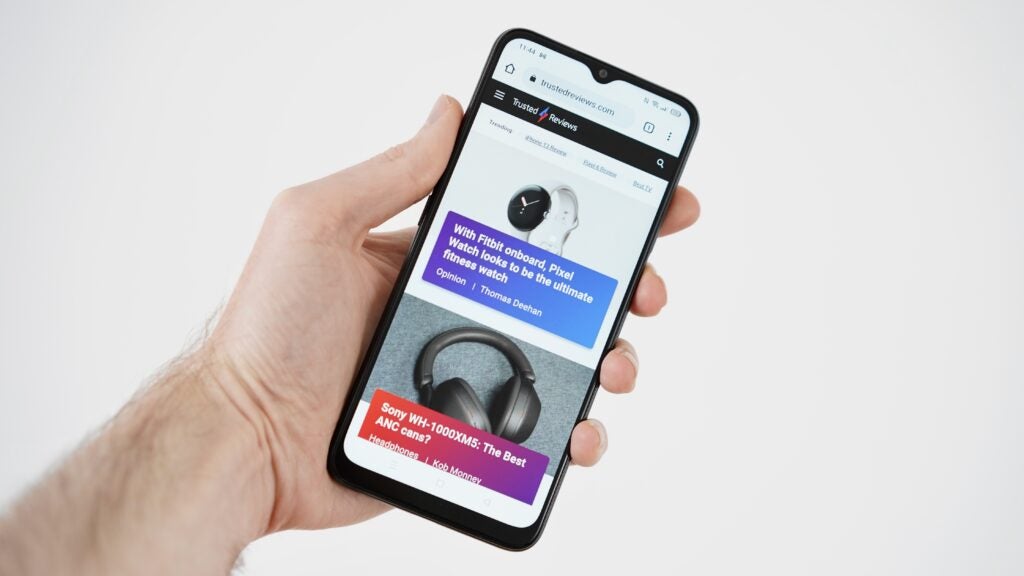
Battery Life
- 5000mAh battery
- Good for two days in some instances
- 10W charging very slow
With a 5000mAh battery allied to that low-pixel 60Hz display, you’d better believe that the Oppo A16s lasts a good while in between charges. It would have been an absolute shock if it didn’t.
Credit where it’s due, though: this is a genuine two-dayer, even if you’re a bit of a media hound. This is driven home by the fact that an hour of Netflix streaming sapped just 4% of a full charge, while an hour of music streaming didn’t even manage to drop the figure a single percentage point.
Unfortunately, I was unable to run the usual TR benchmark test, which entails running the 3DMark Wild Life stress test three times in a row (for an hour in total), since the MediaTek Helio G35 simply wasn’t up to the task.
Oppo has bundled in a pretty meagre 10W charger, which takes an absolute age to get you back up and running. I recorded a 0 to 100% recharge time of just under 3 hours, while it took around 1hr 15mins to hit 50%.
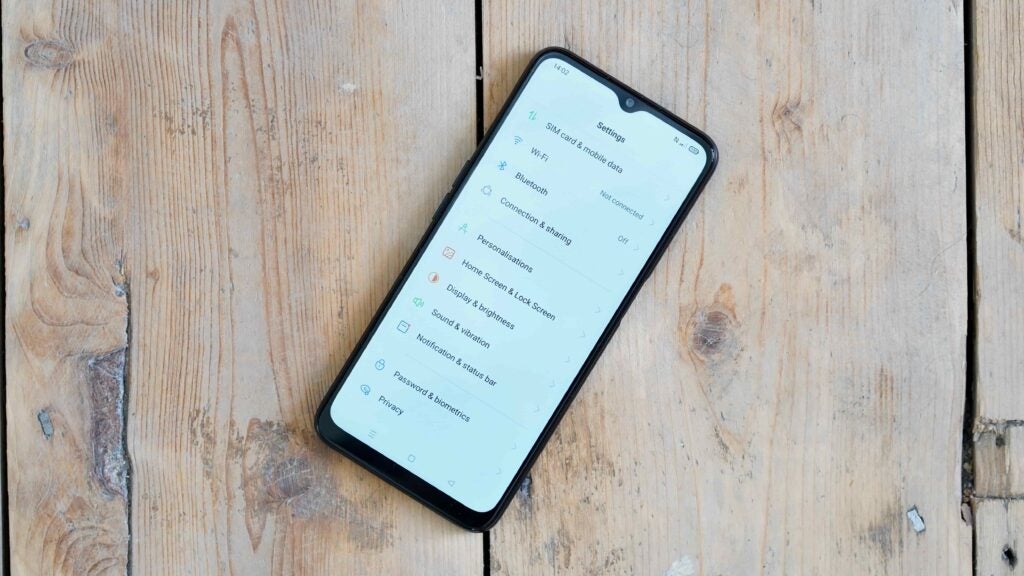
Latest deals
Should you buy it?
You want a battery that lasts With a large 5000mAh battery and a totally undemanding 720p display, the Oppo A16s really sips the juice.
You want to watch a lot of video content With an LCD panel and a mere 720p resolution, the Oppo A16s isn’t the phone you want if you’re intending on hitting a lot of Netflix content on the move.
Final Thoughts
It seems churlish to criticise the Oppo A16s for being completely uninspiring, given that it’s so very cheap. Especially at a time when household budgets are more stretched than ever.
Even as a value proposition, however, the Oppo A16s is somewhat lacking. Delivering poor performance, a display that’s entirely lacking in redeeming features, a plasticky design, and a bog standard camera, it’s a phone that doesn’t really offer a lot of cheer.
On the plus side, its battery life is excellent, and the side-mounted fingerprint sensor is nice and reliable. Did we mention it’s incredibly cheap?
If you really only have £150 or less to spend on a phone, then the Oppo A16s will do a solid job for you. But if you can somehow find a way to spend just a little more, you’ll get a lot more for your money.
How we test
We test every mobile phone we review thoroughly. We use industry standard tests to compare features properly and we use the phone as our main device over the review period. We’ll always tell you what we find and we never, ever, accept money to review a product.
Used as our main handset during test period
Camera tested in variety of situations with all modes
Tested with synthetic benchmarks and real world use
FAQs
This phone does not have an IP rating, which isn’t surprising given its price.
This is not a 5G phone and will not work on 5G networks. It is solely a 4G (and below, where available) device.
Trusted Reviews test data
Full specs
Jargon buster
USB-C
The modern USB connector you’ll find on most Android phones, new laptops, cameras and games consoles. It’s reversible and used for charging along with data-transfer.mAh
An abbreviation for milliampere-hour and a way to express the capacity of batteries, especially smaller ones in phones. In most cases the higher the mAh, the longer the battery will last but this isn’t always the case.Nits
The brightness level of a display. 300 nits is regarded as the minimum target for high-end screens.

